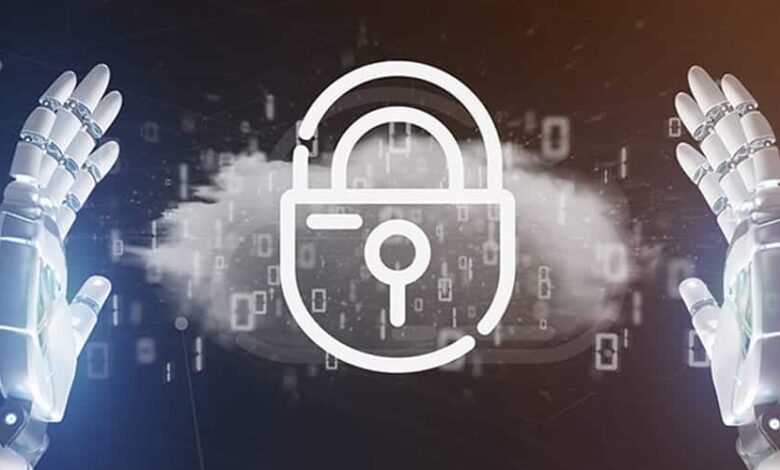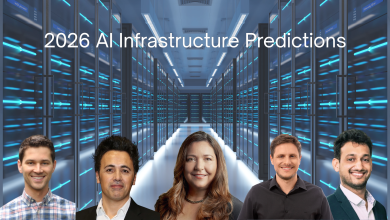
In the last decade, cloud adoption has skyrocketed. Businesses of every size—from startups building their first MVPs to global enterprises managing mission-critical applications—now rely on the cloud as the backbone of their operations. But with this rapid growth comes a new reality: traditional security measures are struggling to keep up.
The cloud has transformed how we store, access, and scale data, but it has also introduced new challenges around visibility, compliance, and control. Attackers no longer need to break into physical data centers; they simply need to find a weak link in a complex web of configurations, permissions, and workloads. To address these evolving threats, security must evolve as well—and that evolution is unmistakably AI-driven.
Why Traditional Cloud Security Isn’t Enough
Conventional security strategies rely heavily on manual reviews, static firewalls, and reactive monitoring. While these methods worked for on-premises systems, they fall short in cloud environments that change by the minute.
Some of the biggest challenges include:
- Complexity of Cloud Environments: Enterprises often operate across multiple cloud providers (AWS, Azure, GCP), each with unique security controls. Monitoring them all manually is nearly impossible.
- The Scale of Data: A single cloud workload can generate millions of logs daily. Without automation, human teams simply cannot keep pace.
- Rapid Development Cycles: With DevOps and continuous deployment, misconfigurations can slip into production faster than security teams can detect them.
- Advanced Cyber Threats: Hackers increasingly use automation and AI themselves, making manual defenses inadequate.
This mismatch between the speed of innovation and the pace of security oversight is why cloud security must lean on AI.
How AI Is Transforming Cloud Security
Artificial Intelligence has become a force multiplier for security teams, offering capabilities that weren’t possible with rule-based systems. Here’s how AI is driving the future of cloud security:
-
Real-Time Threat Detection
AI algorithms continuously monitor network traffic, user behavior, and system activity to spot anomalies. Unlike traditional systems that only detect known threats, AI models learn patterns and can identify zero-day attacks or insider threats.
-
Automated Misconfiguration Management
Research shows that misconfigurations account for the majority of cloud breaches. Something as simple as leaving a storage bucket public can expose terabytes of sensitive data. AI tools now not only detect these vulnerabilities but can automatically remediate them in real time—before attackers exploit them.
-
Adaptive Security Posture
Instead of static rules, AI-powered systems adapt over time. They “learn” what normal behavior looks like in your cloud environment and continuously adjust to new applications, users, and workloads. This dynamic approach ensures that protection scales with your business.
-
Predictive Analytics
AI isn’t just reactive—it’s predictive. By analyzing historical data, machine learning models can forecast potential vulnerabilities or attack patterns. This allows security teams to proactively strengthen defenses before an incident occurs.
-
Reduced False Positives
Security teams often face “alert fatigue” when overwhelmed with irrelevant warnings. AI helps by filtering noise and highlighting only genuine threats, improving efficiency and response times.
AI and Compliance in the Cloud
For businesses, especially those in regulated industries like finance, healthcare, or government, compliance is non-negotiable. Meeting standards such as GDPR, HIPAA, or ISO 27001 requires strict access control, encryption, and monitoring.
AI-powered cloud security platforms streamline compliance by:
- Continuously monitoring configurations against compliance benchmarks.
- Generating automated compliance reports.
- Fixing policy violations without manual intervention.
This means businesses can stay audit-ready at all times without diverting excessive resources toward compliance management.
Speed Without Sacrificing Security
A common misconception is that strengthening cloud security slows down innovation. In reality, AI flips this narrative. By automating repetitive tasks and remediating risks instantly, AI allows developers to move faster without leaving gaps for attackers.
For startups, this speed is critical. When building an MVP or scaling to meet demand, founders can’t afford lengthy security bottlenecks. Similarly, for enterprises managing global infrastructure, AI ensures that security scales seamlessly without slowing down growth.
The Human-AI Partnership
Some worry that AI will replace security professionals. The truth is, AI is not a replacement—it’s an enabler. Cloud security requires human judgment for strategy, governance, and handling complex threats. What AI does is take over the repetitive, time-consuming tasks—such as monitoring, patching, and misconfiguration fixes—so that experts can focus on higher-value work.
This partnership ensures that businesses get the best of both worlds: the precision and speed of AI, paired with the insight and creativity of human professionals.
The Road Ahead: What to Expect in AI-Driven Cloud Security
As AI becomes more integrated into cloud security platforms, we can expect several key trends:
- Self-Healing Infrastructure – Cloud environments that automatically detect and repair vulnerabilities without human intervention.
- AI-Powered DevSecOps – Security embedded directly into development pipelines, ensuring code is scanned and secured before deployment.
- Behavioral Biometrics – Continuous authentication based on typing patterns, mouse movements, or device usage, reducing reliance on passwords.
- AI vs. AI Security Battles – Just as defenders use AI, attackers are doing the same. Future cloud security will involve AI systems competing to outmaneuver each other.
- More Accessible Security for Startups – With automation, even small teams will be able to achieve enterprise-level protection without massive budgets.
Why AI-Driven Security Matters Now
Cloud adoption is not slowing down. Gartner predicts that by 2026, more than 75% of organizations will rely on the cloud for nearly all of their IT operations. With this growth comes greater risk—and attackers are already using AI to exploit vulnerabilities. Businesses that fail to adopt AI-driven security will be left exposed.
The organizations that thrive will be those that balance speed, innovation, and security by leveraging AI as a strategic partner.
Final Thoughts
The future of cloud security is not just AI-driven—it’s happening today. And leading the charge is Gomboc.ai, an AI-powered cloud security platform built to eliminate one of the biggest risks in cloud environments: misconfigurations.
Instead of relying on manual checks or chasing endless alerts, Gomboc automatically detects and fixes misconfigurations in real time, ensuring your cloud remains secure without slowing down your business. Whether you’re a fast-scaling startup or a global enterprise, Gomboc helps you:
- Stay Secure: Prevent breaches caused by human error.
- Stay Fast: Automate fixes without interrupting workflows.
- Stay Confident: Trust that your cloud environment is continuously monitored and protected.
The shift to AI-driven security is inevitable. The question is whether your business will embrace it now—or wait until a breach forces your hand. With Gomboc, the choice is simple: stay fast, stay secure, and stay ahead.






